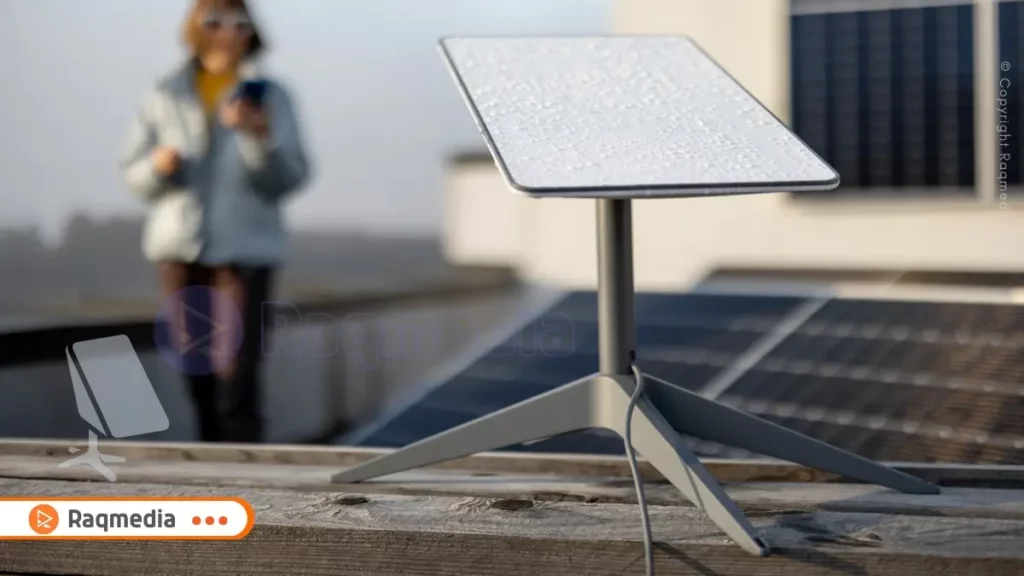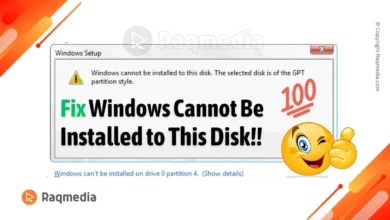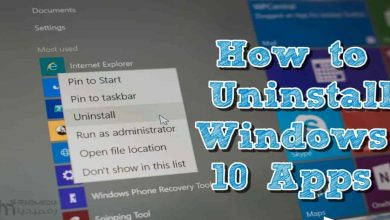In the vast expanse of the digital universe, where connectivity is the lifeline illuminating our paths to progress, understanding the nuances of stowing Starlink emerges as a pivotal art form for optimal performance. For tech enthusiasts voyaging through cyberspace, SpaceX followers charting new frontiers, and Starlink users bridging distances with every click, mastering this art is akin to harnessing starlight itself.
Welcome to a comprehensive guide that beckons you to embark on a journey of stowage mastery – an odyssey crafted with insights that not only elevate your technical prowess but also sculpt a seamless synergy between technology and human ingenuity.
How to Stow Starlink Dish: Step-by-Step Guide
Herein lies a treasure trove of knowledge designed to empower and enlighten – a transcendental experience awaiting those who dare to delve into the intricacies of stowing Starlink. We extend an invitation filled with enlightenment and enrichment for all seekers of connectivity excellence. This narrative pulsates with authenticity, intertwining innovative solutions and time-honored practices in an intricate dance choreographed to enhance your cosmic connection.

Brace yourself as we unravel the mysteries behind optimizing signal reception, fortifying network stability, and embracing cutting-edge trends that shape the architectural landscape of satellite internet systems like Starlink. Let us embark together on a voyage where education meets innovation, where curiosity thrives amidst complexity, shaping a future where every stowage decision propels us closer to stellar communication heights.
How to Stow Starlink Dish
Based on the provided information, here’s a step-by-step guide on how to stow your Starlink dish:
Method 1: Using the Starlink App
- Ensure your phone has the official Starlink app installed and connected to your Starlink hardware.
- Open the app and follow the in-app instructions to stow the dish.
Method 2: Offline Stowing
- Unplug the mount from the dish, but keep the Starlink cable attached to maintain power.
- Hold the dish by the base and face it towards the ground or a flat surface.
- Do not bang or forcefully place it down.
Method 3: Manual Stowing (Without Power)
- Detach the Starlink dish from its mount.
- Keep the Starlink cable attached to maintain power.
- Place the dish face down on a flat surface.
- Slowly push the mast of the dish to the stow position.
Additional Tips
- The Starlink dish can also be stowed by facing it down on a flat surface for a few minutes while connected to power.
- If your dish is broken, power it down by removing the Starlink cable and then manually stow it by following steps 1-4 above.
- When stowing, ensure the dish is not damaged or scratched.
Technical Specifications
- The general height of the dish (unstowed position): 13.5 inches (34.3 cm)
- Water and dust resistance: Rated IP54
- Operating temperatures: -22°F to 122°F (-30°C to 50°C)
By following these methods and tips, you’ll be able to safely and efficiently stow your Starlink dish.
DIY Starlink Stowage Solutions
Properly stowing your Starlink equipment is crucial for ensuring optimal signal reception and network stability. By following the right techniques, you can significantly enhance the performance of your system. Imagine a scenario where a Starlink dish is installed haphazardly, obstructed by trees or buildings, resulting in poor connectivity. This emphasizes the importance of strategic placement and secure storage to maximize signal strength and overall user experience.
To stow your Starlink gear efficiently, start by selecting an unobstructed location with clear visibility of the sky. Ensure that the mounting surface is sturdy and level to support the weight of the dish. Follow manufacturer guidelines for assembly and placement, adjusting azimuth and elevation angles accurately for optimal alignment. Secure all components tightly to prevent movement or damage caused by environmental factors like wind or vibrations.
When setting up your Starlink dish, consider elevation as a crucial factor for optimal performance. Ensure that the dish has a clear line of sight to the sky above without any obstructions like trees or tall buildings. By placing the dish at an appropriate height, you can improve signal reception and minimize potential interference, leading to a more stable internet connection.
Longevity and durability are key considerations when stowing your Starlink setup. Protecting your equipment from harsh weather conditions, such as extreme heat or cold, can prolong its lifespan. Utilizing weatherproof covers or enclosures, especially in regions prone to inclement weather, shields delicate components from potential damage. Regular maintenance checks on cables, connections, and fasteners also contribute to the longevity of your system.
Incorporating proper stowing practices not only safeguards your investment but also ensures consistent performance over time. By prioritizing signal reception through strategic positioning and secure storage techniques, you set the foundation for a reliable network connection that meets your communication needs effectively.
Maximizing Starlink Signal Reception
When it comes to maximizing signal reception with Starlink systems, understanding the factors that can impact your connectivity is crucial. Factors such as obstructions like trees, buildings, or other structures can hinder the signal between your satellite dish and the orbiting satellites. By positioning your Starlink equipment in a clear line of sight to avoid these obstacles, you can significantly enhance your signal strength. Additionally, weather conditions like heavy rain or snow can also affect signal reception, so being mindful of environmental elements when stowing your Starlink setup is essential for optimal performance.
For users looking to maximize their signal strength based on geographical location, certain positioning recommendations can make a significant difference. Depending on where you are located relative to the equator and the local terrain features, adjusting the angle and direction of your satellite dish can help align it more accurately with the satellite constellation overhead. Engaging with resources provided by Starlink or utilizing third-party apps that help determine the optimal positioning for your specific location can assist you in fine-tuning your setup for better connectivity and internet speeds.
Fine-tuning your stowage setup goes beyond just placing your satellite dish in an unobstructed area; it involves actively optimizing its alignment and configuration to achieve the best possible signal reception. Regularly monitoring signal strength indicators on your user interface or employing tools that help pinpoint satellite locations in real-time can aid you in making precise adjustments to enhance connectivity. By staying proactive in maintaining and adjusting your stowage setup based on performance feedback, you can ensure that you are getting the most out of your Starlink system in terms of speed and reliability.
DIY Starlink Stowage Solutions
When it comes to stowing your Starlink equipment, there are numerous do-it-yourself (DIY) solutions that can enhance the overall user experience. Imagine repurposing a sturdy wooden crate or a weather-resistant storage box to house your Starlink components neatly and securely. Not only does this DIY approach offer cost-effective organization, but it also adds a touch of personal flair to your setup. By customizing your stowage solution, you can blend functionality with aesthetics while ensuring the safety of your valuable equipment.
For those looking to protect their Starlink gear without breaking the bank, consider using cable management tools like Velcro straps or adhesive cable clips. These simple yet effective accessories can help keep cables tidy and prevent unnecessary wear and tear on connections. Additionally, utilizing stackable containers or adjustable shelves can optimize space utilization in compact environments, offering a practical storage solution for users with limited room for their Starlink setup. Embracing DIY stowage options not only saves money but also allows for greater flexibility in tailoring the organization system to suit individual preferences.
Innovative stowage ideas cater to diverse user needs by providing versatile solutions for varying living situations. For outdoor enthusiasts or remote workers seeking portable stowing options, rugged cases with foam inserts offer excellent protection during transport while maintaining easy accessibility to essential Starlink components.
Alternatively, individuals residing in urban apartments may benefit from wall-mounted brackets or discreet storage cabinets that blend seamlessly with modern home decor. By exploring DIY stowage solutions tailored to specific environments and lifestyles, users can enjoy the convenience of organized equipment placement without compromising performance or visual appeal.
From repurposing household items creatively to investing in multipurpose storage solutions, the world of DIY stowage offers endless possibilities for optimizing your Starlink setup. By incorporating innovative techniques and customized designs into your organizational strategy, you can transform mundane storage tasks into rewarding projects that showcase both functionality and style. Embrace the DIY spirit to discover unique ways of preserving and arranging your Starlink equipment efficiently while reflecting your personality through inventive stowing solutions tailored to meet your distinct needs and preferences.
Enhancing Network Starlink Stability
Ensuring a stable network connection is crucial when using Starlink services, as it directly impacts the user experience. To maintain network stability, consider placing your Starlink equipment in a location with minimal interference from obstructions like buildings or trees. By strategically positioning your antenna and router for optimal signal reception, you can minimize disruptions and enhance overall network performance. Additionally, regularly checking for any physical damage to your stowed equipment – such as loose connections or water exposure – can prevent unexpected issues that may compromise network stability.
To protect your Starlink equipment from harsh weather conditions, invest in weatherproofing solutions such as outdoor enclosures or covers designed specifically for satellite dishes. These protective measures can extend the lifespan of your equipment and safeguard it against rain, snow, or extreme temperatures, ensuring continued functionality during challenging weather situations.
Common problems related to poor network stability often stem from improper stowing practices. Cable management plays a significant role in maintaining a reliable connection, so organizing and securing cables properly can prevent signal degradation. Inadequate protection of your Starlink components against environmental factors like extreme weather conditions or pests can also lead to connectivity issues. By addressing these common challenges through effective stowage techniques, you can proactively improve the stability of your Starlink network.
The correlation between effective stowage practices and overall network reliability cannot be understated. Properly stowed equipment not only ensures consistent signal strength but also extends the lifespan of your Starlink setup. Monitoring the temperatures around your installed gear and ensuring adequate ventilation can prevent overheating, which is a common culprit behind connectivity problems. By incorporating best practices in stowing your Starlink equipment, you not only boost network stability but also promote longevity and optimal functioning of your satellite internet system.
Future Trends in Stowing Technology
As technology continues to evolve, the future of stowing solutions for satellite internet systems like Starlink looks promising. One emerging trend is the development of smart stowage systems that utilize artificial intelligence (AI) and machine learning algorithms to automatically adjust the positioning of antennas and equipment based on real-time data. These intelligent stowage systems aim to optimize signal reception continually, ensuring users experience minimal interruptions and maximum connectivity. Imagine a scenario where your Starlink setup dynamically adjusts itself to maintain peak performance regardless of external factors like weather or satellite positioning.
Furthermore, advancements in materials science are set to revolutionize stowing technology by introducing ultra-lightweight yet durable components that are resistant to harsh environmental conditions. Future stowing solutions may incorporate advanced composites or nanomaterials that enhance both portability and ruggedness, allowing users to deploy their Starlink equipment in various challenging environments without compromising signal quality. By integrating cutting-edge materials into stowing design, users can expect more versatile and robust solutions tailored to their specific needs.
One exciting prediction is the integration of augmented reality (AR) and virtual reality (VR) technologies into stowage setups for satellite internet systems. Users might soon be able to visualize optimal antenna positions or cable routing configurations through AR overlays or immersive VR simulations, simplifying the installation process and enhancing user convenience. These interactive technologies could provide step-by-step guidance on how to stow Starlink equipment effectively, making it easier for individuals with varying technical expertise levels to set up their systems with confidence.
Make it a habit to perform regular maintenance checks on your stowed Starlink setup. Inspect cables for wear and tear, clean the dish surface from dust or debris that might obstruct signals, and ensure all connections are secure. By staying proactive with maintenance routines, you can prevent potential issues before they affect your network stability and enjoy uninterrupted internet service.
In summary, the future of stowing technology for satellite internet providers like Starlink is poised to deliver innovative solutions that prioritize user experience, efficiency, and reliability. By embracing AI-driven optimizations, advanced materials engineering, and interactive technologies such as AR/VR, users can look forward to a seamless and intuitive stowage experience that enables them to unleash the full potential of their satellite communication devices. Stay tuned for these exciting developments that will undoubtedly reshape how we interact with and harness the power of satellite internet connectivity.
Mastering Your Starlink Stowage
Mastering the art of stowing your Starlink equipment is not just about ensuring optimal performance but also about experiencing seamless connectivity that empowers your digital lifestyle. By following the step-by-step guide provided in this article, you can elevate your signal reception, improve network stability, and enhance your overall Starlink user experience.
Remember, proper stowing practices are essential for maximizing the potential of your satellite internet system. Whether you are a tech enthusiast, a SpaceX follower, or a dedicated Starlink user, investing time in mastering the stowing techniques outlined here will undoubtedly pay off in the form of reliable connectivity and faster internet speeds.
As we navigate the ever-evolving landscape of satellite internet technology, staying informed and adept at stowing solutions will be key to harnessing the full benefits of services like Starlink. Embrace DIY stowage ideas, prioritize network stability through effective practices, and explore emerging trends in stowing technology to stay ahead in optimizing your Starlink setup. By understanding how to properly stow your Starlink equipment and continuously adapting to innovative solutions, you are not just a user but an empowered driver of modern connectivity possibilities.
Frequently Asked Questions on How to Stow Starlink:
1. Why is proper stowing important for Starlink users?
– Properly stowed equipment ensures better signal reception and network stability for optimized performance.
2. How can I maximize signal reception with my Starlink setup?
– Position your equipment according to geographical recommendations and fine-tune its orientation for maximum connectivity.
3. Are there cost-effective DIY solutions for stowing my Starlink gear?
– Yes! Explore creative DIY approaches that protect and organize your components without compromising performance.
4. What do I do if I experience poor network stability with my Starlink service?
– Troubleshoot common issues related to improper stowing practices that may affect network reliability.
5. What future trends can we expect in stowing technology for satellite systems like Starlink?
– Anticipate advancements that will revolutionize user experiences by enhancing stowage efficiency and convenience.
Remember, by mastering your Starlink stowage techniques today, you pave the way for uninterrupted connectivity tomorrow!










How To Stow Starlink Dish effortlessly! Explore our simple step-by-step guide that makes storing your dish quick, safe, and hassle-free every time.
How To Stow Starlink Dish efficiently! Check out our comprehensive step-by-step guide to protect your equipment during travel and tough conditions.